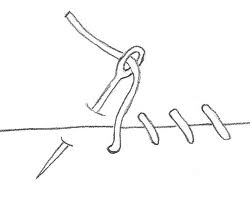How to Whipstitch by Hand: Simple Technique for Neat Fabric Edges
If you’ve ever sewn soft toys or hand-finished fabric edges, chances are you’ve used—or should be using—the whipstitch! It’s a beginner-friendly, go-to hand stitch that loops over the edge of your fabric to neatly bind two layers together. It’s especially perfect for felt crafts, plush toys, and closing up stuffing gaps. Let’s dive into what a whipstitch is, how to do it, and the best fabrics to use for it.
🪡 What Is a Whipstitch?
A whipstitch is a simple hand stitch where the needle passes over the edge of the fabric in a looping motion. It's used to sew two pieces of fabric together, close up an opening, or finish the raw edge of a fabric that doesn’t fray.
It’s neat, fast, and looks great—especially when done on soft fabrics like felt or fleece.
✂️ How to Whipstitch (Step-by-Step)
Knot the Thread
Start by cutting a length of thread (about 18–24") and tying a knot at one end.Insert the Needle
Bring the needle through the top layer of fabric, about 1/8" from the edge. You can hide the knot between the layers if desired.Sew Over the Edge
Bring the needle over the edge and poke it up through both fabric layers, about 1/8" from the edge again.Repeat the Stitch
Continue this motion—around and up—spacing each stitch about 1/4" to 3/8" apart. Keep your spacing consistent for the neatest look.Finish It Off
When you reach the end, tie a small knot close to the fabric to secure your stitching. For extra hold, tuck the knot inside the layers if possible.
🧵 Best Fabrics for Whipstitching
Some fabrics are much easier (and prettier!) to whipstitch than others. Here are two top choices:
✅ Felt Fabric
Felt is ideal because:
It doesn't fray
It’s easy to pierce with a needle
It holds its shape
It’s perfect for plushies, ornaments, and appliqué work
🛒 Shop Felt in 42 Colors – Great for Crafting!
Drawback: Limited patterns and textures available
✅ Fleece Fabric
Fleece is another great choice:
It doesn’t fray around the edges
It’s soft and flexible
Available in a huge range of colors and patterns
🛒 Check out Fleece by the Yard on Fabric Wholesale Direct
⚠️ Tip: Don’t pull your stitches too tight when sewing fleece—let the stitch hug the edge instead of cinching it.
🎯 When to Use the Whipstitch
Closing up stuffed animals after filling
Finishing soft toy edges
Attaching appliqué pieces
Decorative edges for felt crafts
Quick fabric repairs
It’s a staple stitch every hand-sewer should know!
